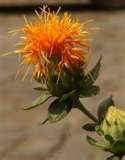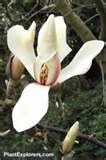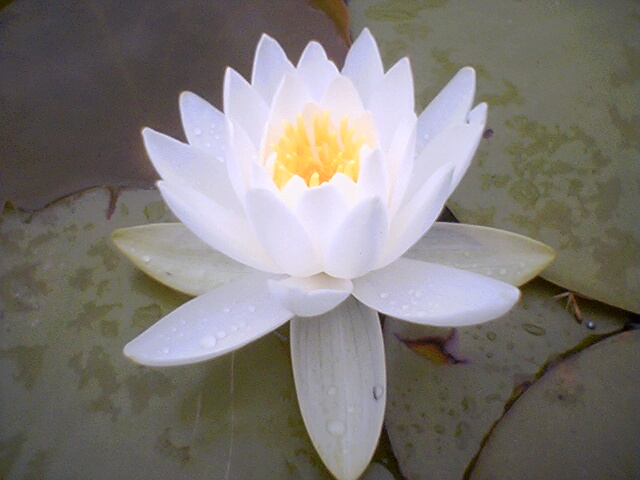Another creative and informative article by Cathy Margolin L.A.c.
Flowering plants are smart. They know how to grab our attention and the attention of passing insects. Flowers are intentionally flaunting sex. Makes perfect sense really, since it’s the flowers job to manage the reproduction of the plant. Plants produce beautiful flower petals of varying colors and shapes to advertise the sexual organs ever so masterly hidden inside. Flowers release powerful aphrodisiac scents, an instinctive incentive for insects to come in and play. Nectar and pollen are the insects’ rewards and the plant benefits from the insects who carry their pollen to other plants which insures rapid fertilization and reproduction. Flowers are smarter than you might think, but there’s more to flowers than just sex.
 Viola Flower – (Zi Hua Di Ding) is known as the purple flower earth herb. This herb/flower has both anti-inflammatory and anti-pyretic effects, meaning it can treat fevers and bacterial infections. It has been used for centuries as an herbal remedy to treat snake bites because it can reduce both swelling and toxicity.
Viola Flower – (Zi Hua Di Ding) is known as the purple flower earth herb. This herb/flower has both anti-inflammatory and anti-pyretic effects, meaning it can treat fevers and bacterial infections. It has been used for centuries as an herbal remedy to treat snake bites because it can reduce both swelling and toxicity.
 Viola Flower – (Zi Hua Di Ding) is known as the purple flower earth herb. This herb/flower has both anti-inflammatory and anti-pyretic effects, meaning it can treat fevers and bacterial infections. It has been used for centuries as an herbal remedy to treat snake bites because it can reduce both swelling and toxicity.
Viola Flower – (Zi Hua Di Ding) is known as the purple flower earth herb. This herb/flower has both anti-inflammatory and anti-pyretic effects, meaning it can treat fevers and bacterial infections. It has been used for centuries as an herbal remedy to treat snake bites because it can reduce both swelling and toxicity.
 Pagoda Flower – or Sophorae flower (Huai Hua) is used to stop various bleeding disorders. Chinese medicine often uses this herb/flower in the treatment of hemorrhoids and excessive menstrual bleeding.
Pagoda Flower – or Sophorae flower (Huai Hua) is used to stop various bleeding disorders. Chinese medicine often uses this herb/flower in the treatment of hemorrhoids and excessive menstrual bleeding.
 Chrysanthemum Flower– (Ju Hua) This common Chinese medicine herb has over 30 different specie and is a wonderful natural eye treatment for dry, irritated eyes. It’s also commonly used for high blood pressure, headaches and other aliments in Traditional Chinese Medicine.
Chrysanthemum Flower– (Ju Hua) This common Chinese medicine herb has over 30 different specie and is a wonderful natural eye treatment for dry, irritated eyes. It’s also commonly used for high blood pressure, headaches and other aliments in Traditional Chinese Medicine.
 Safflower also known as Carthamus – (Hong Hua) is a red flower used to treat menstrual disorders. It’s known to invigorate circulation and help dissolve clots. Safflower has been extensively studied and found beneficial for use in patients with heart disease and joint pain. This flower also has a high success rate in treating flat warts. (Now that’s a fun herbal remedy fact!)
Safflower also known as Carthamus – (Hong Hua) is a red flower used to treat menstrual disorders. It’s known to invigorate circulation and help dissolve clots. Safflower has been extensively studied and found beneficial for use in patients with heart disease and joint pain. This flower also has a high success rate in treating flat warts. (Now that’s a fun herbal remedy fact!)
 Magnolia Flower – (xin yin hua) How about a flower to treat nasal congestion? This flower is one of the most effective herbal remedies for stuffy noses and chronic sinusitis.
Magnolia Flower – (xin yin hua) How about a flower to treat nasal congestion? This flower is one of the most effective herbal remedies for stuffy noses and chronic sinusitis.
 Lotus Flower – (Lian Zi Xin) I would be remiss not to mention one of the most famous flowers associated with Chinese medicine, the Lotus flower. Eight parts of the lotus plant are used for their botanical medicine qualities. The flower is known to treat bleeding disorders (i.e. bloody noses) and often used for irritability and fevers. The stamen of the lotus flower also has healing qualities. One use in Traditional Chinese Medicine is to reduce excessive dreaming.
Lotus Flower – (Lian Zi Xin) I would be remiss not to mention one of the most famous flowers associated with Chinese medicine, the Lotus flower. Eight parts of the lotus plant are used for their botanical medicine qualities. The flower is known to treat bleeding disorders (i.e. bloody noses) and often used for irritability and fevers. The stamen of the lotus flower also has healing qualities. One use in Traditional Chinese Medicine is to reduce excessive dreaming.
Flowers truly have wonderful healing properties and have changed our world more than we imagine. Chinese medicine understands flowers are useful beyond just their sexual appeal of beautiful packaging. (Many more are used in Traditional Chinese medicine than I could possibly have space to mention here.)
